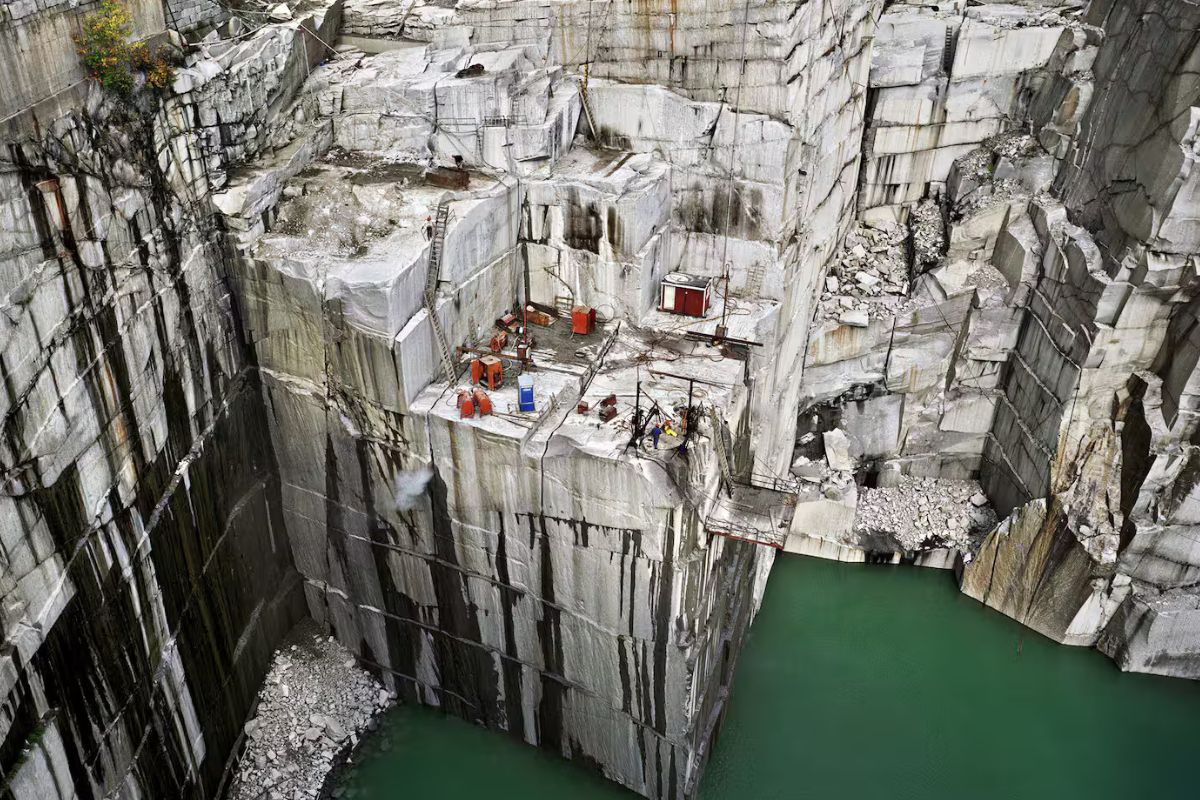Secrets Of Vermont’s Taconic Marble Quarries

Have you ever wondered about the hidden gems of Vermont? One such treasure is the Taconic Marble Quarries. These quarries have a rich history and offer a unique glimpse into the past. Imagine walking through a place where marble has been extracted for centuries, shaping the architecture of many iconic buildings. The quarries are not just about stone; they tell stories of the people who worked there and the communities that thrived around them. Whether you're a history buff or just love exploring new places, the Taconic Marble Quarries provide a fascinating experience. Ready to uncover more? Let's dive in!
Discovering Vermont's Taconic Marble Quarries
Vermont's Taconic Marble Quarries hold a rich history and stunning natural beauty. These quarries have been a source of high-quality marble for centuries, contributing to iconic buildings and monuments. Let's explore some of the most fascinating spots within these quarries.
1. Dorset Quarry
Dorset Quarry, the oldest marble quarry in the United States, offers a glimpse into the past. Established in 1785, it provided marble for the New York Public Library and the Montreal Museum of Fine Arts.
- Swimming Hole: A popular spot for locals and tourists, the quarry's deep, clear waters make it a perfect swimming hole during summer.
- Historical Significance: Walking around, you'll find remnants of old machinery and tools, giving a sense of the quarry's historical importance.
2. Danby Quarry
Danby Quarry, the world's largest underground marble quarry, is a marvel of engineering and natural beauty. Its marble has graced the Jefferson Memorial and the United Nations Headquarters.
- Underground Tours: Visitors can take guided tours to see the massive underground chambers where marble is still extracted.
- Marble Artifacts: The quarry showcases various marble artifacts, including sculptures and architectural elements.
3. Proctor Marble Quarry
Proctor Marble Quarry, located in the town of Proctor, played a crucial role in the marble industry. It supplied marble for the U.S. Supreme Court building and the Tomb of the Unknown Soldier.
- Marble Museum: The nearby Vermont Marble Museum offers exhibits on the quarry's history and the marble industry.
- Scenic Views: The quarry site provides stunning views of the surrounding landscape, perfect for photography enthusiasts.
4. West Rutland Quarry
West Rutland Quarry, once a bustling site, now serves as a historical landmark. Its marble was used in the construction of the New York State Capitol and the Boston Public Library.
- Historical Walks: Visitors can take guided walks to learn about the quarry's history and its impact on the local community.
- Wildlife Habitat: The area around the quarry has become a habitat for various wildlife species, making it a great spot for nature lovers.
5. Middlebury Quarry
Middlebury Quarry, known for its high-quality marble, contributed to the construction of the U.S. Capitol and the National Gallery of Art.
- Educational Tours: The quarry offers educational tours for students and history buffs, providing insights into marble extraction and processing.
- Picnic Areas: Several picnic spots around the quarry allow visitors to relax and enjoy the natural beauty of the area.
6. East Dorset Quarry
East Dorset Quarry, another historic site, supplied marble for the construction of the New York Stock Exchange and the Chicago City Hall.
- Rock Climbing: The quarry's rugged terrain makes it a popular spot for rock climbing enthusiasts.
- Bird Watching: The area is also a haven for bird watchers, with various species nesting in the quarry's cliffs.
7. Manchester Quarry
Manchester Quarry, located near the town of Manchester, provided marble for the construction of the Vermont State House and the Smithsonian Institution.
- Hiking Trails: Several hiking trails around the quarry offer breathtaking views and a chance to explore the local flora and fauna.
- Historical Markers: Informational markers around the site provide details about the quarry's history and its contributions to famous buildings.
8. Pittsford Quarry
Pittsford Quarry, known for its unique pink marble, supplied material for the National Museum of Natural History and the Pennsylvania State Capitol.
- Marble Workshops: The quarry hosts workshops where visitors can learn about marble carving and polishing techniques.
- Photography Spots: The quarry's distinctive pink marble and scenic surroundings make it a favorite spot for photographers.
9. Florence Quarry
Florence Quarry, located in the town of Florence, produced marble for the construction of the Lincoln Memorial and the Metropolitan Museum of Art.
- Guided Tours: Visitors can take guided tours to learn about the quarry's history and see the marble extraction process up close.
- Nature Trails: Several nature trails around the quarry offer opportunities for hiking and wildlife observation.
10. Castleton Quarry
Castleton Quarry, known for its high-quality white marble, contributed to the construction of the U.S. Treasury Building and the Library of Congress.
- Marble Exhibits: The quarry features exhibits showcasing various marble types and their uses in architecture and art.
- Family Activities: The site offers family-friendly activities, including treasure hunts and educational programs for kids.
Vermont's Hidden Marble Treasures
Vermont's Taconic Marble Quarries offer a unique glimpse into the state's rich history and natural beauty. These quarries, once bustling with activity, now stand as quiet reminders of a bygone era. Exploring these sites reveals not just the stunning marble formations but also the stories of the people who worked there. Whether you're a history buff, a nature lover, or just looking for a unique adventure, these quarries have something special to offer. Remember to bring a camera, as the scenic views are truly breathtaking. Visiting these hidden gems provides a deeper appreciation for Vermont's natural resources and the hard work that went into extracting them. So next time you're in Vermont, take a detour to the Taconic Marble Quarries and discover a piece of history that's off the beaten path.

